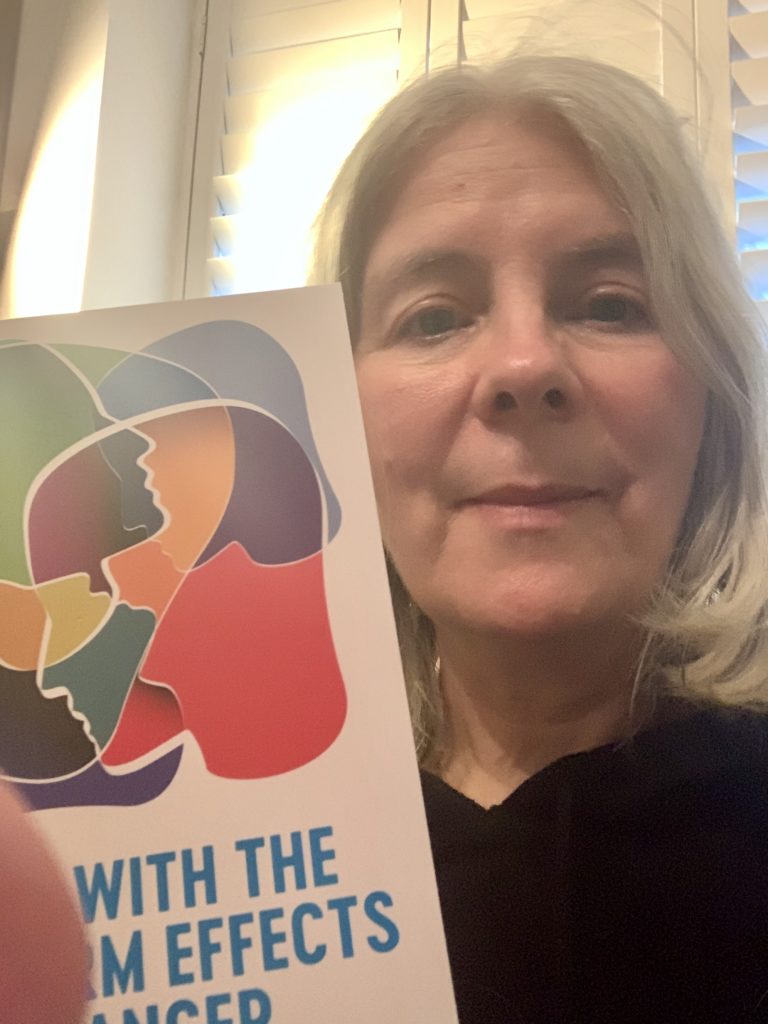 I couldn’t possibly have imagined, when writing my latest book, Living with the long term effects of cancer, last year, from my dual perspective as psychologist and woman who has had breast cancer, that we would all be facing a pandemic such as this appalling Covid19 one we are now enduring. This situation is a huge challenge for so many of us; not least, it’s such a shock and everything else in our lives has taken something of a back seat, for very understandable reasons. This has included, in my case, trying to make light of my own health problems and related psychological challenges. And yet I am in the “vulnerable” category due to the long term effects of cancer that I experience. I am therefore at greater risk of experiencing a bad version of this virus. And I am realising increasingly, day by day, that these infernal long term effects are actually being heightened and worsened by the difficulties of the current situation, as are many other people’s problems. This situation is a veritable Pandora’s box of potential problems and very scary unknowns.
I couldn’t possibly have imagined, when writing my latest book, Living with the long term effects of cancer, last year, from my dual perspective as psychologist and woman who has had breast cancer, that we would all be facing a pandemic such as this appalling Covid19 one we are now enduring. This situation is a huge challenge for so many of us; not least, it’s such a shock and everything else in our lives has taken something of a back seat, for very understandable reasons. This has included, in my case, trying to make light of my own health problems and related psychological challenges. And yet I am in the “vulnerable” category due to the long term effects of cancer that I experience. I am therefore at greater risk of experiencing a bad version of this virus. And I am realising increasingly, day by day, that these infernal long term effects are actually being heightened and worsened by the difficulties of the current situation, as are many other people’s problems. This situation is a veritable Pandora’s box of potential problems and very scary unknowns.
Why I wrote the book
I wrote my book on cancer’s long term effects because, since being diagnosed with breast cancer twice, in 2004, I had realised, over time, that side effects from the treatments I had, both physical and psychological, weren’t subsiding in the way I had been told they should. In fact, some were actually getting worse, eg. muscular skeletal problems, immune function and dread of the local recurrence and spread of cancer. However, despite the fact that other “survivors” were telling me they were in a similar state, what numbers of us have found is that there is little, if any, recognition of our suffering. It’s invisible to many, who look but do not see, who listen but do not hear. And the net result of this is that our problems are often enough belittled and we are judged for not ‘getting over’ cancer and not ‘moving on’. I know that this judgement is often unintentional, but it’s impact is still hard to bear.
Getting over cancer and moving beyond it is a tall order
The reality is that it is nigh on impossible to, for example, get over a cancer that could return or indeed, has returned. And cancer’s treatments often enough cause long term effects, as well. So, I wanted my book to validate the suffering of those living with and beyond cancer and I also wanted it to inform those in healthcare and in the world at large about the plight of those living with cancer’s long term effects, across a range of cancers.
Long term effects are an increasing problem as more of us survive
Very scary though cancer still is, not least because it can still kill its hosts, it is increasingly becoming a chronic condition for many who live beyond their diagnosis, whether they are free of cancer or not. 1 in 2 of us will get this disease and many many of us will even survive for years, so my book effectively speaks to everyone. It’s a stark fact that we will all be affected by cancer in our lifetimes one way or another, if we haven’t already been.
My book is relevant for those with other long term conditions, too.
In this new Covid19 world, I hope my book can offer emotional support to those of us with other chronic conditions too and even to those of us struggling emotionally with this horrible new reality in one way or another. The support and strategies I offer are transferable to many situations and many other conditions, too.
An interesting podcast featuring me: https://twitter.com/JKPBooks/status/1247951884272443392
The Psychological Impact of Breast Cancer: A Psychologist’s Insight as a Patient is available here.
